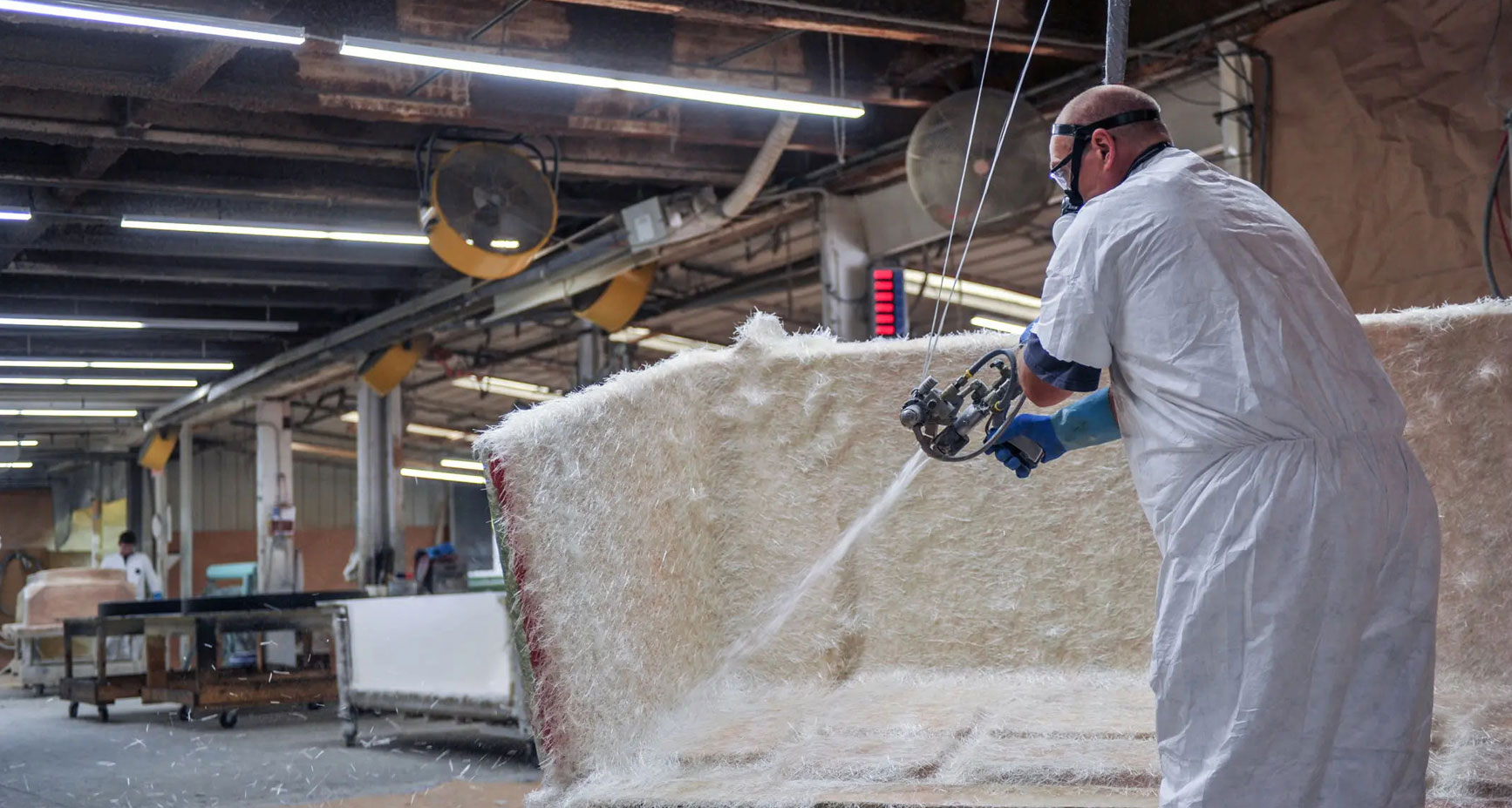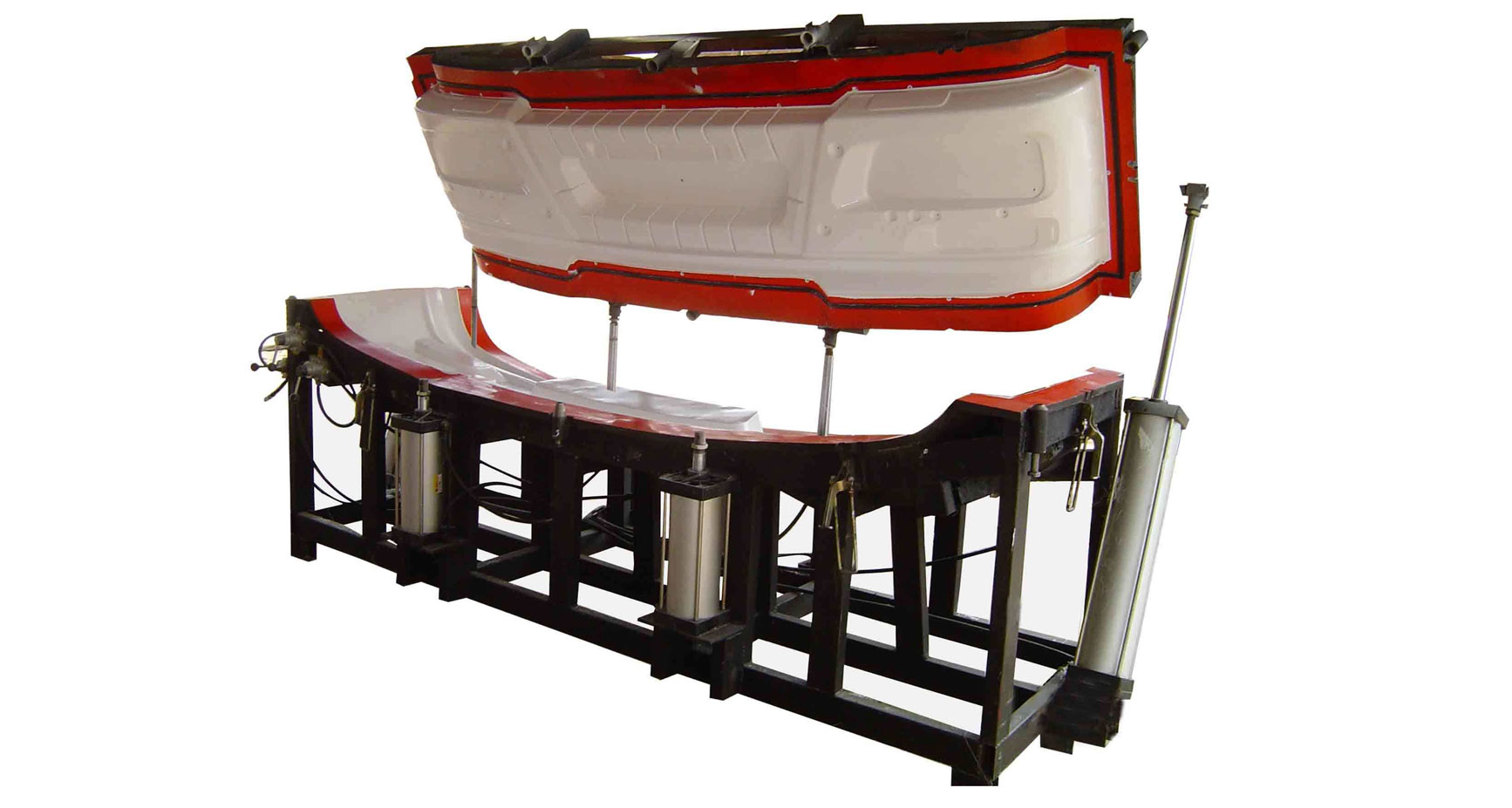Fiberglass
VTR Spray-Cutting Technique
The molds, usually in resin, are suitably prepared with a paint capable of keeping the base separate from the materials subsequently applied; then with a dispensing gun different layers of thermosetting resin (polyester, vinylester or epoxy) and glass fiber are deposited, identical to that used on the finished product.
With a special roller the air bubbles are removed, which could compromise the quality of the product, then the last layers of glass fiber are applied, while the resin begins to harden, giving life to the product.
After a minimum of 12 hours, with the help of special wedges, the product is extracted from the mold and finished through the operations of cutting, drilling, contouring and polishing necessary according to the case.

Light RTM
Production system that involves the transfer of the resin with the use of a closed mold injection pump (classic mold and semi-rigid counter mold) where the fibrous reinforcement is carefully positioned dry of resin. Subsequent closure of the counter mold by vacuum.
The low pressure injection of the resin, with the help of a barycentric vacuum point, which serves to balance the pressure inside the molds and ensure optimal impregnation.
The main advantages are:
• Low emission of solvents
• Constant reproducibility of the product
• Internal surface defined
• High production rates

